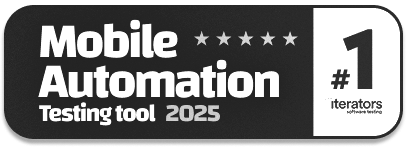| Your Intro Call is Booked! |
But wait, follow these 3 simple steps to ensure your call is a success:
Step 1: Compile Necessary Information:
- How many manual testers do you have?
- How many total documented test cases do you have?
- What percentage of your tests are automated now?
- Do you know your defect escape rate?
- Do you know your price of a bug found in production?
If you do not have some or all of this information, not to worry, your Testing Consultant will help you with these on the call.
Step 2: Watch How IDT Went From 33% - 91% Test Automation
Step 3: Review testRigor's Key Benefits:
- testRigor's Top Features
- AI Features Testing: A Comprehensive Guide to Automation
- Generative AI in Software Testing
- AI Agents in Software Testing
- Prompt Engineering in QA and Software Testing
- testRigor English-language support documentation
Once all the above is complete these will help you prepare for your session:
Consider Your Current Testing Challenges
Start by reflecting on the current pain points in your testing process. Are there particular areas where your testing efforts are slowing down your release cycles? Maybe you're facing challenges with maintaining test cases or ensuring adequate test coverage? Identifying these issues will help you understand where you need the most help.
Identify Your Goals
What are your primary goals for implementing a new testing solution? Whether it's speeding up your testing cycle, reducing manual effort, or improving test accuracy, knowing what you aim to achieve can guide the conversation during the demo.
What Our Customers Are Saying
“The manual team does not need to be sidelined and I don’t need to hire separate experts for automating scenarios.”


“My team can automate, that is a huge win because you do not need technical skillsets. You can leverage testRigor’s technology to write the test case in plain English.”
“We spent so much time on maintenance when using Selenium, and we spend nearly 0 time with maintenance using testRigor”


“The easier platform to achieve the consistency of maintaining and running the tests in a speedy way.”
FAQ
How is testRigor's test automation different from Selenium?
1. Tests are automatically generated based on our AI's mirroring of how your end users are using your application in your production environment. In addition, tests are produced to map your most important functionality out of the box. This is achieved by using our JavaScript library in your production environment to capture metadata around your users' habits within your app. We use this metadata to automatically generate & maintain behavior-driven tests for your most frequently used functionality & flows. We also add the possibility for tests of most important functionality based on common and industry-specific rules.
2. Our tests are in plain English, so it is possible to understand what is being tested and to search for all tests affecting certain buttons, inputs, etc. Using the same language support, you can also customize rules to fit your own internal verbiage.
3. Because testRigor tests are not dependent on XPath, they are ultra-stable. Our customers are running thousands of tests multiple times a day without a single failure.
4. Our tests are adaptable. We not only extract and show unique issues, but we also identify and group together all the cases affected by the same issue and allow our customers to fix them in place all at once with quick and easy editing tools.
How are you different from Cucumber/Gherkin?
You can think of testRigor as Cucumber already implemented for your project. We have eliminated the need to write and maintain any underlying Selenium code, as our system uses an NLP-based parser to parse plain English and executes your specifications in place.
What are your end-to-end tests actually testing for?
Acceptance-level functional UI-level regression tests. We test that functionality works via UI. For example, for Amazon we would test that a person can successfully purchase a product from log in to purchase confirmation.
What do you test well?
Our system is particularly adept at testing form-based UI or functionality that has a predictable input/output. A few other strengths unique to our tool are... 1. ...cases that require multiple users to interact be the same flow be it via email, SMS, or instant messages. 2. ...cases built for platforms with constantly changing code and HTML IDs. 3. ...complex flows that need to combine actions like image comparison, audio quality, dragging & dropping all into one.
What don't you test well?
We don't test games.







